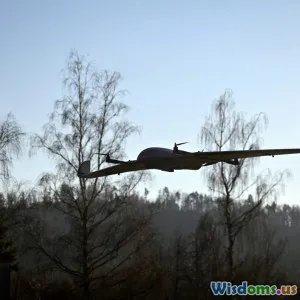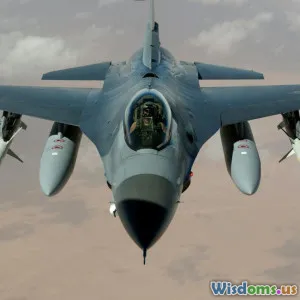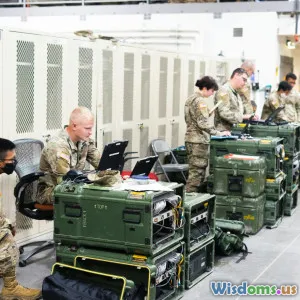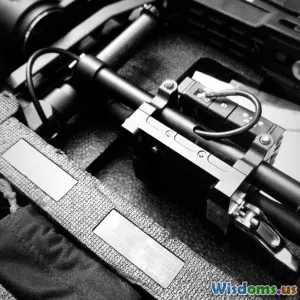
Why Hypersonic Missiles Challenge Traditional Air Defenses
9 min read Explore how hypersonic missiles disrupt traditional air defenses, redefining modern warfare with unprecedented speed and maneuverability. (0 Reviews)
Why Hypersonic Missiles Challenge Traditional Air Defenses
Introduction
In the rapidly evolving world of military technology, hypersonic missiles have emerged as game-changers, challenging the tenets of traditional air defenses worldwide. Traveling at speeds greater than Mach 5, or over 3,800 miles per hour, these weapons represent a leap beyond conventional ballistic and cruise missiles. Their incredible speed combined with innovative maneuverability means that existing radar and interception systems face unprecedented difficulties in detecting and neutralizing them in time.
As nations race to develop or counteract hypersonic capabilities, understanding the challenge they pose is crucial—not just for military strategists but for global security analysts, defense industries, and policy makers. This comprehensive analysis will unpack why hypersonic missiles disrupt traditional strategies, the technical and tactical reasons behind this disruption, and the implications for future defense systems.
Understanding Hypersonic Missiles: Definitions and Capabilities
What Constitutes a Hypersonic Missile?
A hypersonic missile is any missile or vehicle that travels at speeds exceeding five times the speed of sound (Mach 5). These missiles typically fall into two categories:
-
Hypersonic Glide Vehicles (HGVs): These are launched by boosters to high altitudes before gliding through the atmosphere toward their targets at hypersonic speeds. Their ability to maneuver mid-flight makes them unpredictable.
-
Hypersonic Cruise Missiles (HCMs): Powered by advanced engines such as scramjets, these missiles sustain hypersonic speeds over long distances while executing complex maneuvers.
For example, Russia’s Avangard is a prototype HGV claimed to reach speeds up to Mach 27, while the United States and China are simultaneously developing scramjet-powered cruise missiles with similar speed regimes.
Advancements That Define Their Challenge
Speed and maneuverability form the hypersonic missile’s offensive backbone. Unlike traditional ballistic missiles with predictable ballistic arcs, hypersonics can alter their trajectory mid-flight, defeating early-warning and defense interception attempts.
Moreover, due to their reduced flight time—sometimes as short as minutes for long-range targets—hypersonic missiles leave defenders with mere seconds or minutes to respond, undermining layered defense strategies that rely on tracking and staging intercepts.
Limitations of Traditional Air Defense Systems
Radar and Detection Challenges
Traditional radar systems are designed primarily to detect slower-moving targets along predictable paths. The hypersonic missile’s high speed compresses detection and tracking timelines, severely limiting response time.
Additionally, hypersonic glide vehicles often fly at lower altitudes known as the “mid-course” or “atmospheric flight” regime, skimming below the typical detection envelopes of early-warning satellites designed for ballistic missile trajectories. This reactionary blind spot impacts systems like the U.S. Ground-Based Midcourse Defense (GMD) or Aegis Ballistic Missile Defense.
Interception and Kinetic Kill Difficulties
Standing interception—destroying the missile mid-air—is an art mastered over years against subsonic and supersonic threats but becomes drastically more difficult with the hypersonics’ speed and unpredictability.
Missile defense interceptors require precise tracking and targeting data, a conundrum made harder by maneuvering warheads avoiding a straightforward intercept course. The example of the Aerospace Corporation's analysis reveals existing missile defenses may need significant upgrades or completely new paradigms to address these threats.
Real-World Examples Highlighting the Threat
Russia’s Hypersonic Weapons Push
Russia was among the first to publicly showcase hypersonic weapons, such as the Avangard and the Kinzhal air-launched missile. According to Russian Defense Minister Sergey Shoigu, these weapons can evade most traditional missile defense systems in service today.
In 2020, Russia reported successful tests of the Avangard, sparking concerns globally due to its ability to change course mid-flight dramatically.
China’s Song-Compatible Efforts
China’s development of the DF-17 missile, believed to carry an HGV, is emblematic of growing hypersonic capabilities. This system provides a technological deterrent by complicating the strategic calculations of potential adversaries, particularly the U.S., which bases much of its missile defense on predictable threat patterns.
U.S. and Allied Perspectives
The United States is navigating a balancing act—while developing its hypersonic arsenal, it must innovate defense responses. Projects like the Hypersonic and Ballistic Tracking Space Sensor (HBTSS) aim to address detection challenges by deploying specialized sensors.
Meanwhile, NATO has expressed concerns, emphasizing the need for collaborative defense modernization to account for rapid-response capabilities against hypersonic threats.
Strategic and Tactical Implications
The Compression of Decision Timelines
Hypersonic weapons’ speed reduces the time between detection and impact to mere minutes, compelling military commanders and political leaders to make rapid decisions under pressure, increasing risks of accidental escalation.
Shifting the Balance of Deterrence
The ability to penetrate existing missile defenses challenges previously held notions of deterrence based on missile defense reliability. Countries equipped with hypersonic missiles gain asymmetric leverage as they can threaten critical infrastructure or military assets with lower chances of interception.
Proliferation Risks and Global Stability
As hypersonic technology advances, it risks proliferation beyond traditional powers, introducing destabilizing factors into international relations and arms control regimes like the INF Treaty collapse.
Future Directions in Counter-Hypersonic Defenses
Advanced Detection Techniques
Emerging solutions include layered detection networks integrating space-based infrared sensors with advanced radar capable of high-frequency updates. Examples include DARPA’s Glide Breaker program, focusing on interception methods tailored to hypersonic threats.
Directed Energy and Railgun Technologies
Researchers are exploring directed energy weapons (lasers) and railguns as rapid, precise options for neutralizing hypersonic threats. While still experimental, these technologies offer potential for speed-of-light engagements mitigating the brief reaction times required.
International Collaboration
Addressing such a formidable challenge involves cross-national partnerships, information sharing, and potential arms control agreements focused on preventing arms races that could spiral beyond control.
Conclusion
Hypersonic missiles present a paradigm shift in the landscape of military technology and air defense. Their extraordinary speed, maneuverability, and low-altitude trajectories render traditional detection and interception mechanisms increasingly ineffective. In this light, the global defense community faces an urgent imperative to redefine defense architectures, invest in cutting-edge technologies, and foster international collaboration to keep pace with these rapidly evolving threats.
The next decade will likely witness high-stakes innovation races—not only to deploy hypersonic weapons but just as importantly, to design successful countermeasures safeguarding global security and strategic stability. Understanding these dynamics now equips us with foresight into one of the defining security challenges of the 21st century.
By appreciating the profound challenge posed by hypersonic missiles to traditional air defenses, professionals and citizens alike can advocate for informed policies ensuring safer, well-prepared futures.
Rate the Post
User Reviews
Popular Posts




















